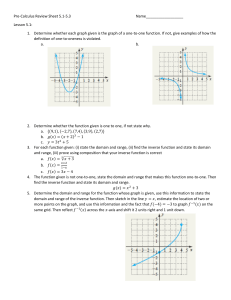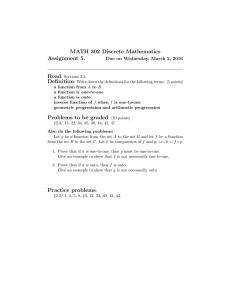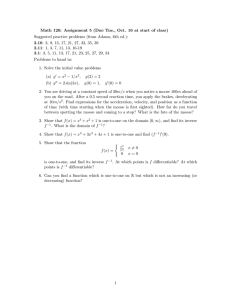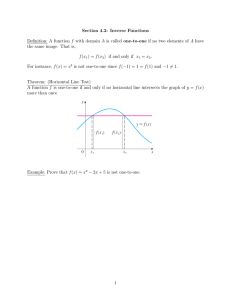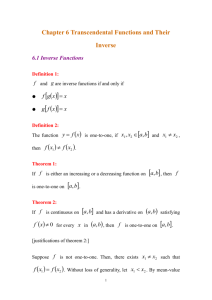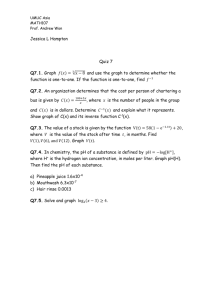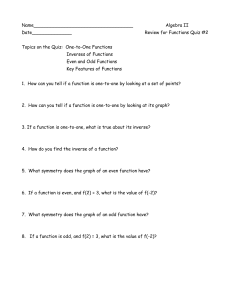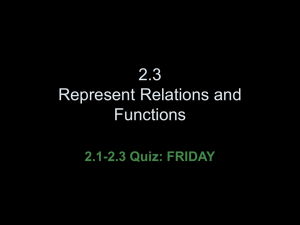Section 4.2 Inverse functions ) 6= f (x
advertisement
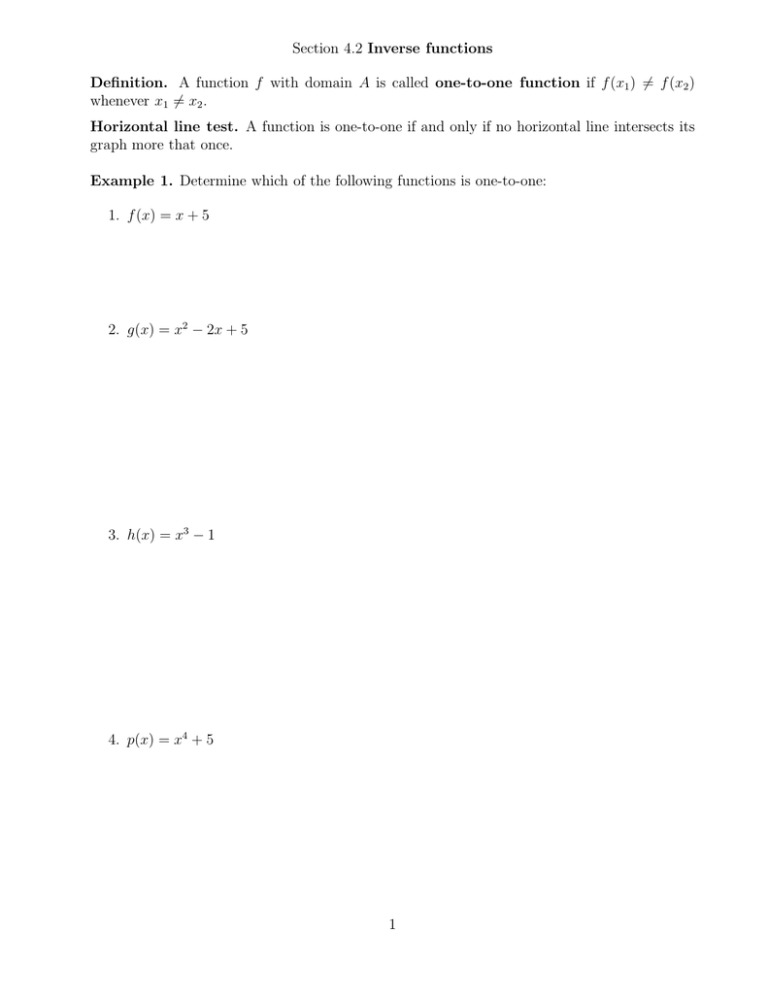
Section 4.2 Inverse functions Definition. A function f with domain A is called one-to-one function if f (x1 ) 6= f (x2 ) whenever x1 6= x2 . Horizontal line test. A function is one-to-one if and only if no horizontal line intersects its graph more that once. Example 1. Determine which of the following functions is one-to-one: 1. f (x) = x + 5 2. g(x) = x2 − 2x + 5 3. h(x) = x3 − 1 4. p(x) = x4 + 5 1 Definition. Let f be one-to-one function with domain A and range B. Then its inverse function f −1 has domain B and range A and is defined by f −1 (y) = x ⇐⇒ f (x) = y for any y in B. domain of f −1 = range of f range of f −1 = domain of f Let f be one-to-one function with domain A and range B. If f (a) = b, then f −1 (b) = a. Cancellation equations f −1 (f (x)) = x for every x ∈ A f (f −1 (x)) = x for every x ∈ B How to find the inverse function of a one-to-one function f 1. Write y = f (x) 2. Solve this equation for x in terms of y. 3. Interchange x and y. The resulting equation is y = f −1 (x). The graph of f −1 is obtained by the reflecting the graph f about the line y = x. Example 2. Show that the function f (x) = 1 + 3x is one-to-one and find f −1 (y). 5 − 2x Theorem. If f is a one-to-one continuous function defined on an interval, then its inverse function f −1 is also continuous. 2 Theorem. If f is a one-to-one differentiable function with inverse function g = f −1 and f ′ (g(a)) 6= 0, then the inverse function is differentiable at a and g ′ (a) = 1 f ′ (g(a)) Example 3. Find g ′(4), where g is the inverse function of the function f (x) = 3 + x + ex . 3

